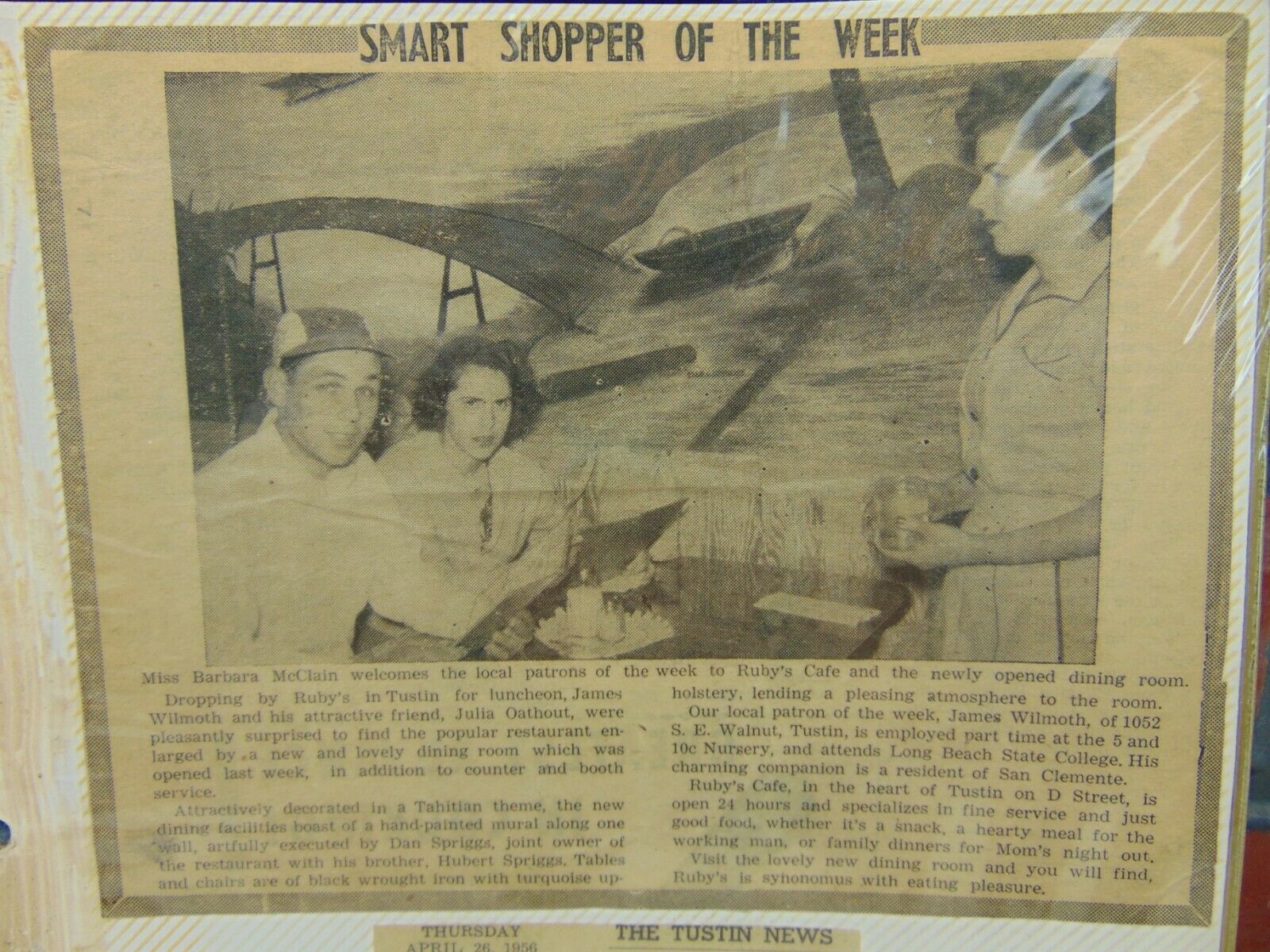-40%
1956 RUBY'S DINER "D" Street Tustin CA CONTEST WINNER Newspaper Article/Photo
$ 25.87
- Description
- Size Guide
Description
This is a newspaper article that has been mounted to a 9 x 11" photo album page. It includes announcements of the contest winner from a RUBY'S DINER contest winner from the April 18, 1956 ORANGE DAILY NEWS and April 26, 1956 TUSTIN NEWS.Ruby's Diner is an iconic restaurant chain in Orange County, CA. This one was located on "D" Street - a historic location on it's own. On the reverse side of this page are 4 photos of the lucky winners with an advertising piece for the YELLOW PAGES.
A very unique item.
The History of D Street.,
by Juanita Lovret
Reprinted courtesy of the Tustin News
Where is D Street? Newcomers to our community often ask this question after learning that Columbus Tustin used numbers and letters on the plat map for his original settlement.
Naming north and south streets A, B, C, and D, he then used First, Second, Third, Fourth, Fifth and Sixth for streets going east and west. Fifth Street never materialized and Fourth Street became Main Street when the first businesses were located on it, but because these changes occurred in the early years of Tustin City's growth, they don't puzzle today's residents.
In pre-freeway days all inland traffic between San Diego and Los Angeles traveled through Tustin. Laguna Road, D Street and First Street were part of California State Highway 101 which was identified by the state as El Camino Real because of its nearness to the historic El Camino Real. The original El Camino Real, or King's Highway, was the path used by the Franciscan fathers to travel between their missions, each a day apart. Reaching from San Diego to Sonoma, it connected the pueblos and four presidios as well as the missions.
Mission Bells identified Highway 101 as part of El Camino Real. These markers were first proposed in 1892 by Miss Anna Pitcher of Los Angeles. Eventually in 1902 she got the endorsement of the California Federation of Woman's Clubs and the Native Daughters of the Golden West. A group called the El Camino Real Association formed and the first bell was placed in front of the Old Plaza Church in Los Angeles in 1906. By 1915, 158 bells had been installed including one on D Street in Tustin next to the First National Bank.
Tustin's bell was removed while Highway 101 was being widened and never reappeared. After I-5 was completed few travelers passed through Tustin and the El Camino Real designation faded into the past until the 1976 Bicentennial Committee changed D Street to El Camino Real as part of their celebration.
Extended as the city spread eastward, El Camino Real replaced Laguna Road and became the link between Old Town and Tustin Marketplace. Through the efforts of the Tustin Area Woman's Club Tustin's Mission Bell marker is in front of Camino Real Park.
And that's the story of D Street.
(From the TUSTIN AREA HISTORICAL SOCIETY - tustinhistory.com).














